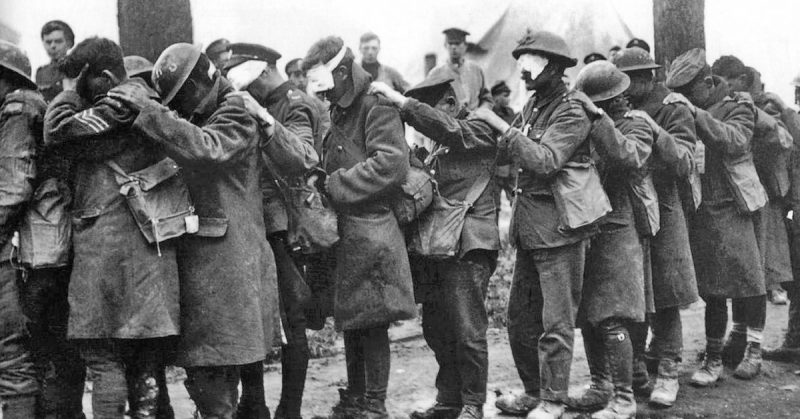Often referred to as the “Chemists War,” World War I saw the rise of chemical weapons being used on the battlefield. It all began with the French Army, who used tear gas in the form of small grenades.
These small grenades didn’t hold much gas, and were largely undetected by German forces. The French issued a redesign on the tear gas, and from here, weapon use expanded to other gases and agents such as mustard gas, phosgene, and chlorine.
Chemical weapons were dangerous, as they could be undetectable as well as deadly. Because of this, they were a popular choice on the battlefield. Whether used to cause nuisance or pain, chemical weapons played a large role in World War I.
Types of Gases Used
There were three primary types of gases used in World War I.
Asphyxiant gases, mainly mustard gas. Mustard gas is particularly dangerous as it can take several hours to appear. Soldiers who were burned by the gas would see large blisters form where the chemical had touched them. The blisters would fill up with blood and puss, and turn yellow. If a soldier’s body was over 50% burned, the chance for survival diminished rapidly. When inhaled, mustard gas caused internal burns and blisters and could lead to breathing issues.
Sternutator Gases such as phosgene, chlorine, and diphosgene. These gases caused pain in the chest as well as pain in the eyes and nose. They could also cause choking, nausea, vomiting, coughing and sneezing.
Lachrymator, or tear gas. Tear gas caused irritation to soldiers’ throats and eyes. The gas was more of a nuisance than anything and was virtually ineffective with a gas mask.
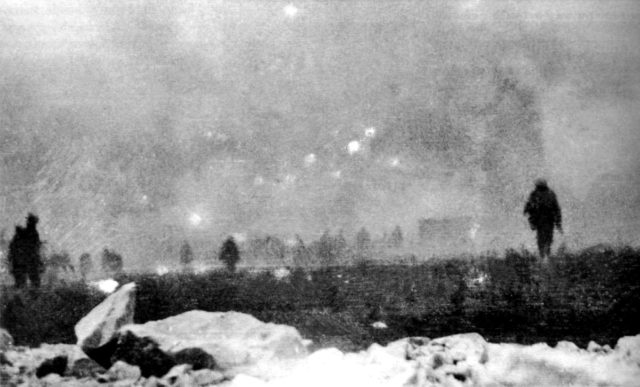
Development and Early Chemicals
The French were the first to employ chemical weapons, using tear gas in August of 1914. The gas was filled in 26mm grenades and contained a very low amount of tear gas, which made it unnoticeable to troops. Because of this, the active ingredient was changed from bromine to chloroacetone in the second wave of tear gas grenades that were issued to French troops. This made the gas a little stronger, but not by a substantial amount.
1915 would bring about a lot of changes to the chemical weapons being used in attacks. The Germans were the first to use gases on a large scale attack in January of 1915, when they dropped 18,000 chemical shells, loaded with xylyl bromide, on Russian lines near Rawka River west of Warsaw. This attack was a disappointment, however, as the chemical froze instead of vaporizing.
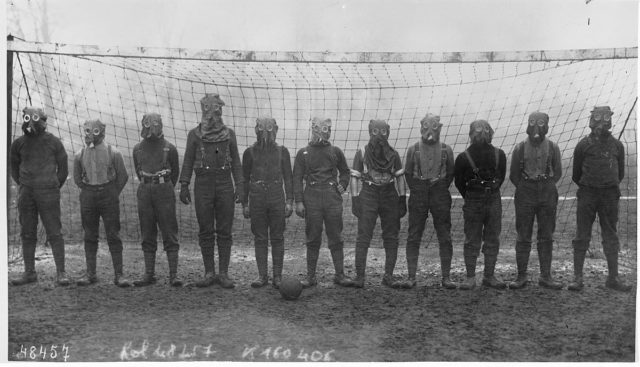
The Germans would find more success just a few months after the attack, using a different gas. German scientist Fritz Haber, who had overseen the production of chlorine as a chemical weapon, pushed for the chemical to be used in warfare.
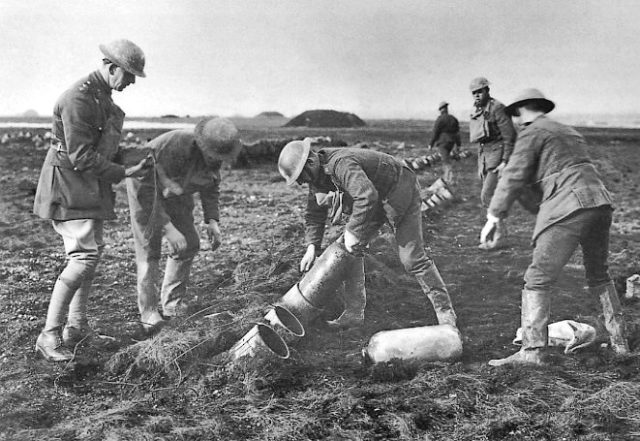
Haber’s chlorine would be used for the first time on April 22nd, 1915. The gas was deployed from 5,730 cylinders which lined a road just north of Ypres in Belgium. At first, the deployment appeared to be unsuccessful, but as the winds shifted, the gas began to spread across the land. This lead to both Germans and Allied troops being affected by the poisonous gas. It was the first major use of poisonous gas and lead to the research of over 3,000 gases that could be used in war.
Haber’s success garnered him the name ‘Father of Chemical Warfare,’ as his use of Chlorine led to widespread advancements in chemical use. He also helped develop the gas mask, which helped aid in the amount of casualties caused by the very chemical weapons he had worked to create.
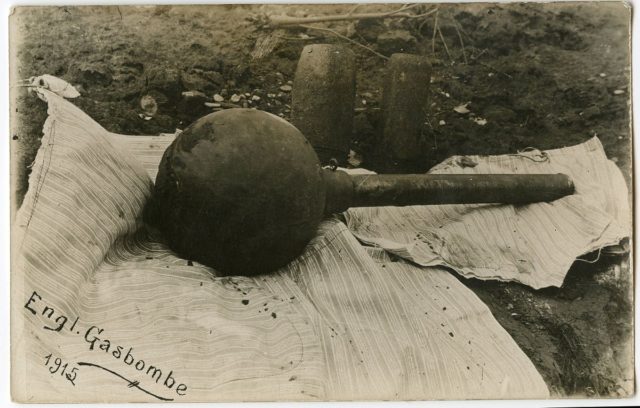
Chlorine saw even more use after the first Battle of Ypres, including in the Second Battle of Ypres, which occurred just two days after the first battle. It was then used a week later on May 2nd and again, against the British, on May 5th at Hill 60. The gas killed over 90 men at the Hill.
Following the use of gases in the Battle of Ypres and at Hill 60 against the British, they began to develop their own chemical weapons. Their first attempt with chemical weapons occurred at the Battle of Loos. It was a failure. Due to the winds, the gas never really moved past no man’s land, and some of it hung around British trenches.
To add insult to injury, the British gas masks were poorly designed. Some troops’ gas masks eye holes fogged over, causing them to remove their mask to see and so leaving them exposed.
In August of 1915, German Forces used the gas against Russian troops who were defending Fort Osowiec. The gas attack had such an effect on the Russians that the Russian Army began to research and development of chemical gas in shells.
Introduction of Phosgene
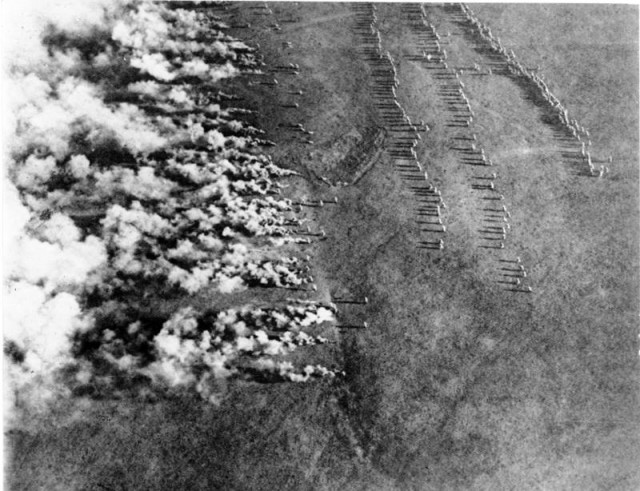
Chlorine had some drawbacks as a weapon. It was easy to detect, as once deployed the gas would produce a green cloudy smoke, which came with a strong oder. The gas was also water soluble; a damp cloth held over the face could reduce the effects the gas had on you.
So, in late 1915, the French-developed phosgene was put in to use. The gas attacked the lungs, and would cause initial symptoms of coughing, sneezing, vomiting and choking.
While phosgene could be used by itself, it was often mixed with chlorine. The gas was largely odorless and didn’t produce a cloud. This made it undetectable, and so far more dangerous. One of the issues those who used the gas faced, was that it could take up to a day for symptoms to show, meaning those who had been around the chemical could fight back. While Phosgene was the second most manufactured gas in World War I, it was the deadliest chemical weapon used. Phosgene accounted for 80-85% of all chemical weapon deaths in World War I.
Mustard Gas
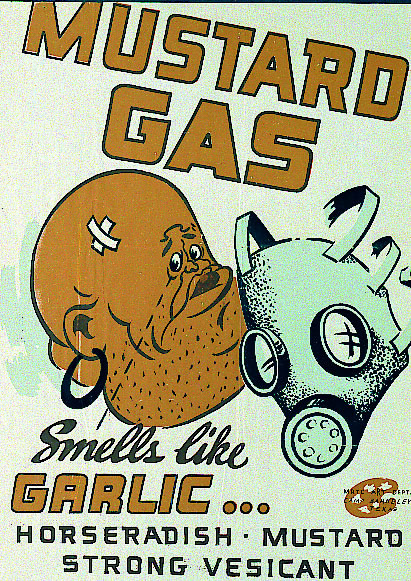
Perhaps the most feared chemical weapon used in WWI was mustard gas. It was developed by the Germans and was introduced to war in July of 1917. Because mustard gas was used in shells, once deployed it could get into the soil and stay there for several weeks at a time. This meant anyone who came through the area could get the poison in their system.
Because of this, the gas was often used as a land pollutant. Mustard gas only accounts for 5% of chemical weapon deaths in WWI, but it’s widely reported on due to the nature of the burns that victims received.
Over 190,000 tons of chemical weapons were produced during World War 1. There were an estimated 1.3 million casualties caused by chemicals during the war, with 90,000 fatalities.
